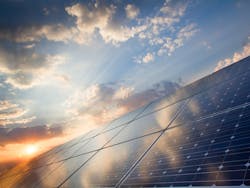Plans are underway for a new microgrid that will combine renewable generation and energy storage batteries to supply tiny Okinoerabu Island in the southern part of Japan.
The microgrid will use Kyocera’s energy management system to control solar, wind and storage battery capacity. Designed to promote local economic development and reduce carbon emissions, the microgrid will also maintain power supplies even during natural disasters, such as the typhoons which regularly batter the island and cause frequent power outages.
Kyocera has signed a comprehensive partnership agreement with the towns of China-cho and Wadomari-cho located on the island in Kagoshima Prefecture. The 36 square mile island is just north of Okinawa and has a population of only around 12,000 people.
Now available, a newly released vision paper by Think Microgrid, “Microgrids: An Immediate Climate Solution“
Detailed plans for the project are due to be completed by the end of March 2022 and, following verification of its feasibility, construction is expected to begin after April that year. China-cho and Wadomari-cho currently rely on diesel generators for power generation, but once the new systems are developed, the towns plan to use renewable energy as their primary power source.
The system is expected to supply power throughout Okinoerabu Island but won’t require any new power lines. Instead, the existing power distribution network will be used under license. A local power company will also be set up on the island to maintain the microgrid facilities.
According to Kyocera, Japan’s Ministry of Economy, Trade and Industry selected the project for a subsidy promoting community cooperation through the use of renewable energy, with the microgrid also improving reliability, promoting economic development and reducing consumer power costs.
Learn more about the renewable microgrids being built worldwide. Subscribe to the free Microgrid Knowledge Newsletter, delivered twice weekly to your mailbox.







